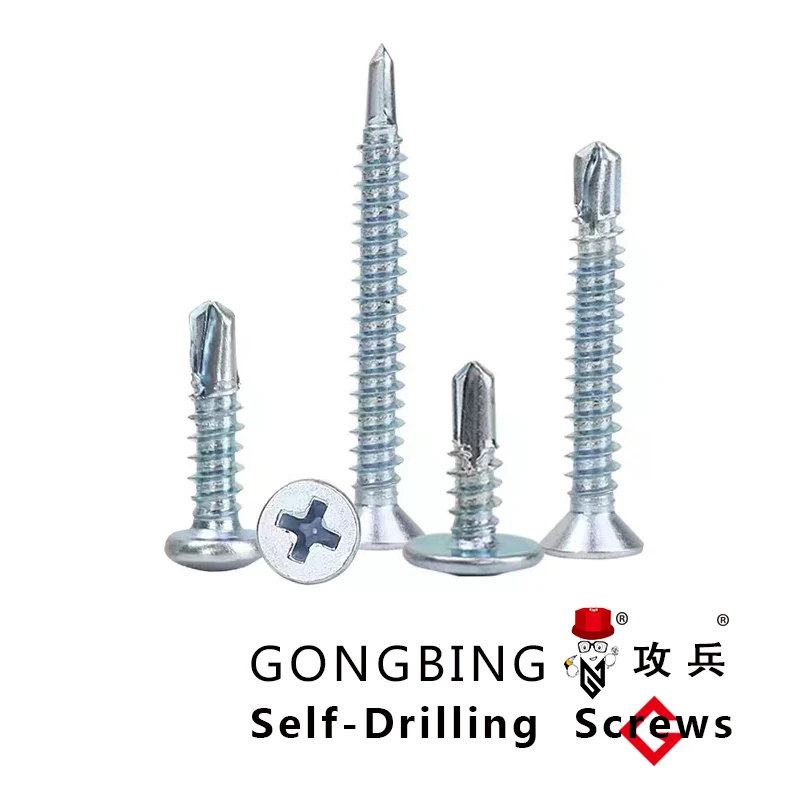Exploring the Benefits of M10 Wedge Anchor for Construction Applications
Understanding the M10 Wedge Anchor A Comprehensive Guide
When it comes to fastening applications, especially in concrete, nothing is quite as reliable as a wedge anchor. Among the various types available, the M10 wedge anchor stands out due to its versatility and strength. This article delves into the M10 wedge anchor, discussing its design, applications, installation process, and the advantages it offers.
What is an M10 Wedge Anchor?
The M10 wedge anchor is a type of mechanical anchor used primarily for securing objects to concrete. The M in M10 stands for metric, indicative of its size, with 10 referring to the nominal diameter of the bolt, which is 10 millimeters. Wedge anchors consist of a threaded rod, a wedge, and a nut. When the anchor is installed, the wedge is pulled up into a conical-shaped sleeve, which expands against the concrete, providing a strong grip.
Applications
M10 wedge anchors are incredibly versatile and find use in various applications. They are commonly used in
1. Construction and Civil Engineering For securing steel beams, columns, and other structural components to concrete. 2. Manufacturing and Industrial Settings To anchor machinery, equipment, and shelving systems to prevent movement or tipping.
3. Home Improvement Projects Essential for mounting heavy items like shelves, cabinets, and even large appliances.
4. Infrastructure Used for securing handrails and signs, ensuring they remain stable.
Installation Process
The installation of M10 wedge anchors is straightforward but requires attention to detail and safety precautions. Here’s a step-by-step guide on how to properly install them
1. Choose the Right Location Identify where the anchor will be installed and ensure the section of concrete is clean and free from debris.
2. Drill the Hole Using a hammer drill, create a hole in the concrete that matches the diameter and depth specifications for the M10 anchor. Make sure to use the correct drill bit size (typically, a 10 mm bit for M10 anchors).
m10 wedge anchor

3. Clean the Hole After drilling, it’s essential to remove dust and debris from the hole. Use a vacuum or blow it out with compressed air to ensure that the anchor has a clean surface to grip.
5. Tighten the Anchor As you tighten the nut, the wedge will be drawn up into the sleeve, expanding it against the sides of the hole. It’s crucial to follow the recommended torque specifications to achieve the optimal holding strength without over-tightening.
6. Final Checks Once installed, perform a final check to ensure the anchor is secure and stable.
Advantages of M10 Wedge Anchors
M10 wedge anchors offer several benefits that make them a preferred choice for many applications
- High Load Capacity They can handle substantial loads, making them suitable for heavy-duty applications.
- Ease of Use The straightforward installation process allows for quick setups, which is advantageous in both industrial and residential settings.
- Durability Made from high-strength materials, M10 wedge anchors are resistant to corrosion and wear, ensuring a long-lasting performance.
- Versatility They can be used in various environments, from residential buildings to industrial facilities.
- Reusability In many cases, they can be removed and reused without significant loss of strength.
Conclusion
The M10 wedge anchor is an essential fastening solution for anyone working with concrete. Its ability to support heavy loads and its versatile applications make it a reliable choice in construction, manufacturing, and home improvement projects. By following the proper installation procedures and understanding its benefits, you can confidently use M10 wedge anchors to achieve a secure and stable attachment for your projects. Whether you are a professional contractor or a DIY enthusiast, investing in quality M10 wedge anchors can enhance the safety and stability of your constructions.
-
Weatherproof Plastic Expansion Anchors for OutdoorNewsJun.06,2025
-
Sustainability in the Supply Chain: Eco-Friendly TEK Screws ProductionNewsJun.06,2025
-
Load-Bearing Capacity of External Insulation FixingsNewsJun.06,2025
-
Double Head Bolts: Enhancing Efficiency in Industrial MachineryNewsJun.06,2025
-
Corrosion Resistance in Chipboard Screws: Coatings for Wholesale DurabilityNewsJun.06,2025
-
Butterfly Toggle Bolts : Enhancing Structural ResilienceNewsJun.06,2025
